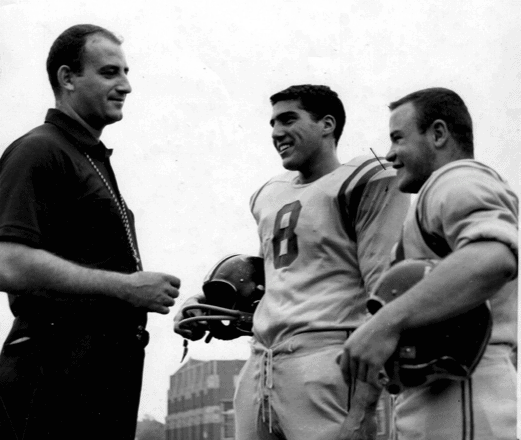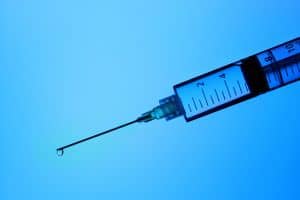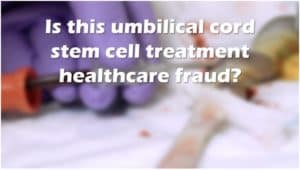Feb 28, 2019
My column regarding ACL ruptures appeared last Friday. That afternoon, I received the following inquiry and comment from a reader, regarding the prognosis and possible early preventive interventions for a significant knee injury.
“I am one of relatively few patients who has had the Bone Marrow Concentrate treatment for a fully-torn (not-retracted) ACL tear and to date, I’ve had what I’d consider to be an amazing recovery. I read your latest blog post and just thought I’d let you know that I’m back to very aggressive skiing (including small but non-trivial jumps). However, I did want to ask, if you would be willing to comment, if there are actions or periodic diagnostics, you’d recommend to maximize the chances that I’m still happy skiing 10,20,30 years after the injury? I understand you probably can’t comment but nevertheless wanted to let you know I was also a real-life person who had a significant knee trauma with multiple surgical consults all agreeing it was fully torn and required surgery (to return to high-level skiing) and now have a fairly normal looking ACL in MRI (per independent radiologist) and am back to 100% with activities that require a lot of knee stability. I did do two rounds of same-day BMA reinjections and a bunch of platelet injections but no surgery.”
The answer is an orthopedic assessment at three-year intervals to look for markers of post traumatic osteoarthritis such as loss of terminal extension and asymmetrical flexion. The MRI is helpful in detecting moderate arthritic changes but the latest development, the needle scope, allows an orthopedic surgeon to directly examine the meniscus and cartilage in an office setting. The concern is post traumatic arthritis, cartilage defects that will progress, and meniscal damage not always seen on the MRI. Here are some thoughts on early intervention with Cellular Orthopedic and Regenerative Medicine options.
A recent Study Compared the Efficiency of Needle Arthroscopy Versus MRI for Meniscal Tears and Cartilage damage. Needle arthroscopy (NA) may be a less costly and more accurate option for diagnosis and treatment of meniscal tears and early onset post traumatic arthritis than MRI, according to a study published in the February issue of Arthroscopy. Researchers collected data on costs for care and accuracy, including procedures for both false-positive and false-negative findings well as private payer reimbursement rates. They compared outcomes using the global knee injury and osteoarthritis outcome score (KOOS). Patients were followed and evaluated over a two-year period.
There are several restorative options now available when conservative therapies for the treatment of knee degenerative processes, such as non-pharmacological interventions, systemic drug treatment, and intra-articular therapies offer only short-term benefits or fail. Before resorting to surgery; be aware that encouraging preliminary results have been reported using mesenchymal stem cells (MSCs), either alone or in association with surgery. My clinical published research documents success with using your Bone Marrow Concentrate for joint restoration and combating progression of posttraumatic arthritis. Additionally, I have published an article concerning another source for joint restoration, micro-fractured adipose tissue. The latter has created a huge interest in the context of cartilage regeneration due to its wide availability, ease to harvest and richness in mesenchymal cell elements within the so called stromal vascular fraction. Moreover, MSCs from adipose tissue are characterized by marked anti-inflammatory and regenerative properties, which make them an excellent tool for regenerative medicine purposes.
Tags: ACL tear, Adult Mesenchymal Stem Cells, arthritis, Arthroscopy, biologics, bone marrow, cartilage damage, cellular orthopedics, hip pain orthopedic surgeon, joint pain, joint restoration, knee pain, KOOS, meniscal tears, MSC, orthobiologic, Osteoarthritis, PRP, sports medicine, therapy, treatment

Feb 4, 2019
On Monday, the annual migration for attempts at the physical Restoration and Regeneration of the NFL players injured bodies began. While in the past, the losers would chant “wait ‘til next year”; very soon, the NFL winners and losers alike will take flight to Orthopedic Surgeons around the USA and world, on occasion, some will even find their way to my office, seeking both operative and non-operative repair of the injuries incurred over the last eight months. What I will offer is Regenerative and Restorative initiatives using either the patient’s bone marrow, circulating blood or body fat. While I use a needle and not a knife in my practice, at times it takes arthroscopy and open surgical procedures to assist the athlete in returning to play or extending a career. The fall NFL 2019 schedule is already on line; there is a sense of urgency. These attempts at restoring and regenerating anatomic and physical well-being are not limited to the professional football player. To the best of my recollection, it was Tiger Woods in 2008, who brought regenerative medicine to the attention of the American public. When in 2011, Kobe Bryant traveled to Dusseldorf, Germany for a highly publicized orthobiologic treatment of his arthritic knee, returning to play for another six seasons, he was soon after followed by the professional golfer Fred Couples, baseball player Alex Rodriguez, and NFL star Payton Manning. All returned to their respective sport and extended playing careers; many more have followed. Now Cellular Orthopedics, Regenerative Medicine and Joint Restoration are available around our country as well as at my office for professional, college, high school, amateur athletes and fitness enthusiasts of any age.
Orthobiologics and Cellular Orthopedics are a dynamic approach to body injury and arthritis using the individual’s own (autologous) platelets, molecules and proteins circulating in the blood (Cytokines and Growth factors), adipose tissue, or bone marrow to effect healing and eliminate pain. At this time, it is FDA Compliant to use such in the care and treatment of injury and arthritis as long as that which is to be used has been harvested from the patient herself or himself, not cultured or expanded, and not treated with additional agents. The successes are no longer merely anecdotal; there is an ever-increasing body of scientific evidence to validate the emerging discipline of Cellular Orthopedics. For instance, in my office, I integrate patient care with documenting outcomes and that has led to several recent scientific publications contributing to an evidence-based orthobiologics practice. You may find those publications and more at my web site www.sheinkopmd.com. To schedule a consultation call (312) 475-1893.
There is a way of still being an athlete and significantly reducing your risk of injury, take up esports. Marquette University is adding varsity esports, a competitive video gaming team in the fall of 2019. The team will have tryouts, coaches and regular practices just like any intercollegiate sport
Tags: arthritis, athletes, autologous, avascular necrosis, bone marrow, cellular orthopedics, cytokines, esports, Growth Factors, injury, joint pain, joint replacement, joint restoration, knee pain, meniscus tear, MSC, OA, orthobiologic, Orthopedic Surgeon, Osteoarthritis, Pain Management, pain reduction, patyon manning, platelets, PRP, sports injury, sports medicine, stem cells, superbowl, surgery, tiger woods, torn labrum
Jan 10, 2019
Nonobstructive meniscal tears
There is increasing evidence to suggest that patients with meniscal tears at the knee that do not cause “clunking”, giving way, or locking; hence nonobstructive, may benefit from Cellular Orthopedic intervention coupled with physical therapy. Previous studies involving patients over 45 years of age comparing arthroscopy with physical therapy for nonobstructive meniscal tears as seen on an MRI justify an initial conservative approach; but patient satisfaction may require 24 months to achieve. For those patients who undergo arthroscopic surgery, there is a significant increased risk of repeat knee surgery. In our practice, those patients electing to use the Physical Therapy option without surgery but with a Cellular Orthopedic intervention minimized the length of time needed to return to full activity.
Number of stem cells in amniotic fluid
The functionality of stem cells in amniotic fluid as sold today is a myth. Research shows that 250cc of fresh C-section delivered amniotic fluid, when introduced immediately into culture, only yields 40 stem cells. This means there are 0.16 stem cells per 1 cc of full-term amniotic fluid. Scientific literature referred to by the amniotic fluid marketing forces is based on amniotic fluid collected early in pregnancy.
Acetabular Labral Tear
A hip (acetabular) labral tear is damage to cartilage and tissue in the hip socket. In some cases, it causes no symptoms. In others it causes pain in the groin. Just because a tear is seen in the hip labrum on an MRI, it does not mean the tear is necessarily the cause of the pain. Before initiating treatment, the orthopedic surgeon must exclude that an underlying arthritic condition within the hip is not the real pain generator. More recently recognized is predisposition for a tear in those with abnormal acetabular architecture.
On biologics for knee osteoarthritis
Orthobiologics may become a mainstream treatment for knee osteoarthritis. While Platelet-rich plasma and hyaluronic acid injections are the most established biologics-based treatments for knee osteoarthritis so far, it’s not too early to make confident use of stem cells. At the same time, I must continually warn patients to be particularly careful about claims for these substances. All recommendations for intervention must be FDA compliant and evidence based. (To learn about my contributions to the cellular orthopedic scientific evidence, visit www.sheinkopmd.com. Under the information bullet on the top, you will find published articles)
Eventually, I believe the science and FDA will triumph over quackery and orthobiologics will become an essential part of every knee surgeon’s armamentarium. Available orthobiologics, include:
- Hyaluronic acid
- Platelet-rich plasma
- Cytokine modulation
- Stem Cells
- Exosomes
- Adipose tissue
To learn more or to schedule an evidence based consultation, call (312) 475-1893
Tags: adipose tissue, amniotic fluid, biologics, bone marrow, cytokine modulation, Exosomes, fat, hyaluronic, joint, labral tear, Micro-Fractured Adipose, orthobiologics, Osteoarthritis, pain, Platelet Rich Plasma, PRP, renovation, stem cell, torn meniscus

Nov 8, 2018
My goal is to inform each and every patient who presents with a painful joint, the cause of their pain; and based on our scientific and clinical evidence, that intervention which will have the greatest chance of short term and long-term success. While inflammation in the joint is a proximate cause of pain, that pain is not generated by cartilage deterioration as cartilage doesn’t have a nerve supply. While joint pain in part is generated by the synovial tissue lining the arthritic or traumatized joint, the subchondral bone supporting the joint may be even more important when it comes to the pain and limitations resulting from the arthritic affliction.
Bone pathologies resulting from acute or chronic injury presenting as bone marrow lesions associated with insufficiency fractures, persistent bone bruises, osteoarthritis and early stages of avascular necrosis are too often neglected by those holding themselves out to be regenerative medicine specialists. Options for the treatment of these subchondral conditions require a core decompression of the problematic bone and direct application of either bone marrow aspirate or a synthetic orthobiologic. The biologic treatment of bone marrow lesions with these techniques that encourage physiologic bone remodeling and repair when combined with Stem Cell and Protein/Growth Factor concentrates into an arthritic joint offers the best chance for joint preservation and a successful outcome for the patient undergoing a Stem Cell procedure.
Are there Stem Cells in Cord Blood, Wharton’s Jelly or Amniotic Fluid? These three alleged sources of Stem cells are processed when collected. The tissues are then cryopreserved with DMSO or some other cryopreservant. When thawing takes place, the few cells contained do not survive the thawing process. Additionally, DMSO is cytotoxic, a cell killer at room temperature.
As many of my patients are aware, I began my Cellular Orthopedic journey some years ago as an early member of the Regenexx Network. While my personal and practice ethos as the only orthopedic surgeon caused me to leave the network, I still follow the Blog and I find the one posted today most appropriate.

I was on a local radio show this week and a woman called in and claimed that she had been defrauded by a local chiropractic clinic. She paid big bucks for what she was told were “millions of young stem cells” injected intravenous. As I will show you this morning, as a medical expert in this area, I can show you that she is more likely than not the victim of consumer fraud. Let me explain.
The Problem of the Chiro Clinic Bait and Switch
I’ve blogged extensively about how chiropractic, acupuncture, naturopathic, and some physician clinics are defrauding patients by claiming to inject millions of live and young stem cells from amniotic fluid or cord blood (or other products). The problem is that none of these 361 registered tissue products has any significant number of live stem cells.
Tags: ACL Injury, bone edema, bone lesion, bone marrow, Cartilage, chondromalacia, chronic pain, Cord blood, cryopreserved, Hip, joint pain, joint replacement, Knee, meniscus tear, naturopathic, Osteoarthritis, osteochondral defect, regenerative medicine, shoulder, stem cell, subcondral bone

Oct 11, 2018
In general, a Growth Factor is a term used to describe a protein produced be a variety of different cell types that binds to specific receptors on different cellular surfaces. They may on the one hand stimulate cell growth; on the other hand, some growth factors may block actions on target cells of a different protein. Cytokines are another class of signaling proteins more closely related to hormones. The subject matter is quite complex; but, I wanted to introduce the subject of Growth Factors into my Blog as growth factors are increasingly gaining attention in combating and reversing the progression of arthritis.
Already in use is Tissue Necrosis Factor-alpha blocker, frequently prescribed in a proprietary form as Humera, for inflammatory arthritis and arthropathy such as Rheumatoid Arthritis, Psoriatic Arthropathy and Ankylosing Spondylitis. It works by blocking a protein (TNF-Alpha), found in the body’s immune system and responsible for joint swelling and inflammation. By so doing, Humera reduces symptoms, prevents bone and cartilage damage and improves physical function.
Outside of the United States, Interleukin 1 Receptor Antagonist Protein (IRAP) is used for the symptoms of grades 2 and 3 Osteoarthritis by binding to the cell surface and preventing IL-1 from sending a proinflammatory message to that cell. IRAP is currently the basis for a clinical trial taking place in the United States to document its safety and efficacy. The sponsors of the trial hope for full enrollment and outcomes analysis in the not too distant future; so, the Growth Factor might be used with FDA approval in clinical practice. It was for IRAP that one-time basketball great Kobe Bryant, travelled to Dusseldorf Germany, ten years ago with grade 4 osteoarthritis of the knee thereby prolonging his career by six years.
On Tuesday of this week, I received a call form a company exploring a safety and feasibility trial for yet another growth factor approach with the latter derived from another human biologic resource. Last March, there was a contact from a global pharmaceutical company asking my help in developing a trial for yet another type of a growth factor approach in dealing with the symptoms and limitations of arthritis. I introduce the Growth Factor subject matter now to better update my reader as well as prepare you for the coming debate that Growth Factors are equal to; perhaps more important as we age than stem cells for dealing with the symptoms, functional limitations and progression of arthritis.
To learn more, you may call for a consultation. (312) 475-1893 or visit my web site at WWW.Sheinkopmd.com
Tags: autologous, bone marrow, Growth Factors, Interleukin 1 Receptor Antagonist Protein, IRAP, joint pain, OA, Osteoarthritis, PRP, stem cells


